日本には家系ごとに「家紋」と言われる家族や個人を識別する紋章があります。
家紋はどのようにして誕生し、現在は何に使われ、どこで見られるのか気になりませんか。
そこで今回の記事では家紋について英語で解説していきますので、外国人に英語で説明する際の参考にしてみてください。
英語記事:
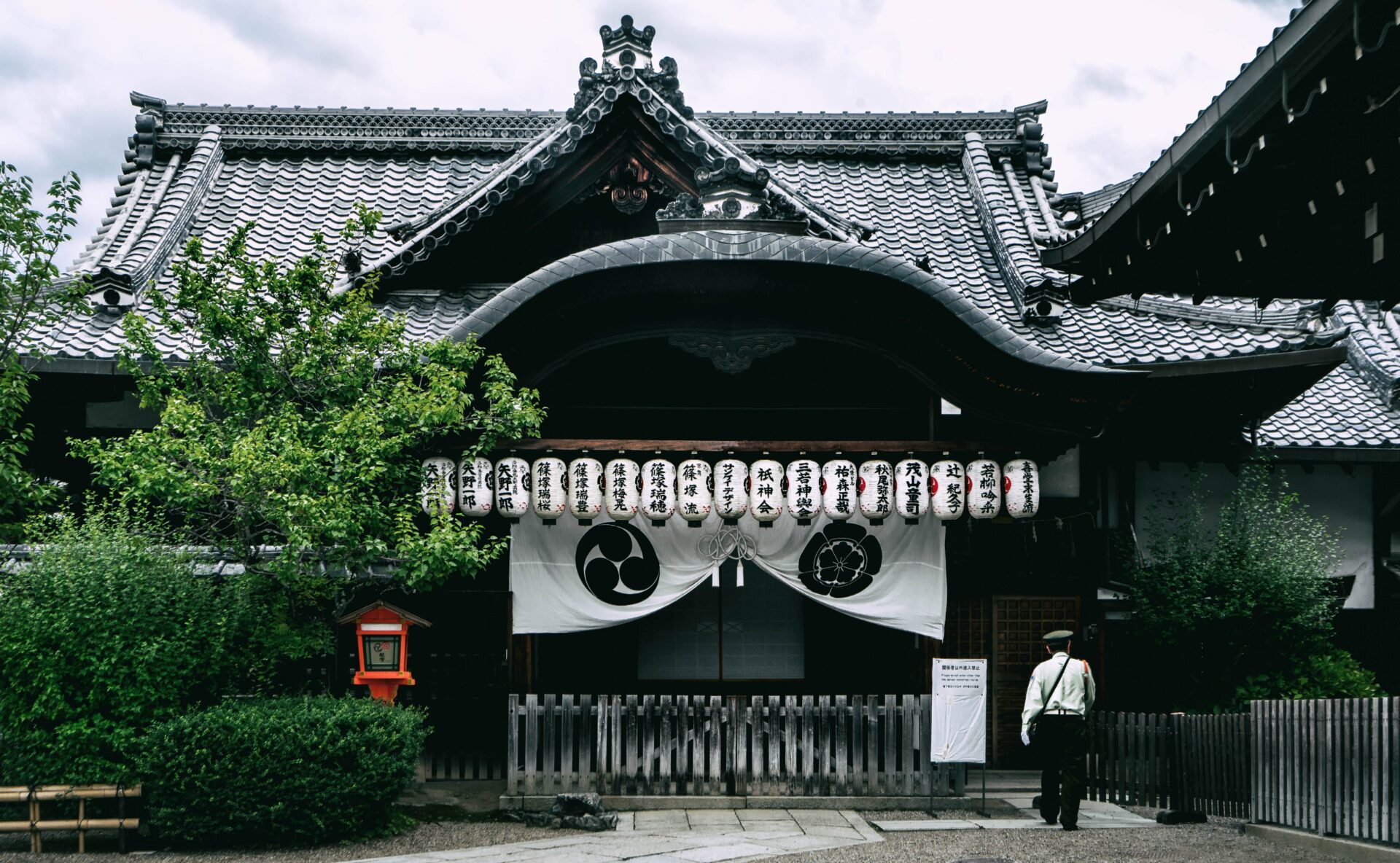

【この記事を書いているのは…】
石井 政章(いしい まさあき)
元ホテルマンです。リゾートホテル、シティホテルで主にフロントスタッフとして働いていました。
ホテルで働こうと思ったきっかけは、海外が好きで英語を活かしたいのと人を喜ばせたいという想いがあったからです。
現在は退職しWebライターとして活動しています。
「家紋」は英語で何と言う?
家紋は英語で「family crest」と言います。
Family crests are emblems that have been passed down from generation to generation in Japanese families from their ancestors and are a representative symbol of the family.
家紋とは、日本の家系で先祖代々受け継がれてきた紋章で、その家の代表的なシンボルです。
「家紋」の歴史を英語で説明
The history of family crests can be traced back to the Nara and Heian periods.
家紋の歴史は古く奈良時代から平安時代にまで遡ります。
The aristocrats of those days used to wear their own personal patterns as ornaments on their clothes and furniture to add an element of customization and luxury.
当時の貴族たちは衣服や家具を自分の持ち物を把握するために華やかな装飾品をつけていました。
However, since it was difficult to identify their own belongings by the appearance of the gorgeous ornaments alone, they gradually began to use their own family crest.
しかし装飾品だけでは自分のものと判別できなかったので、自分の家紋を使用するようになりました。
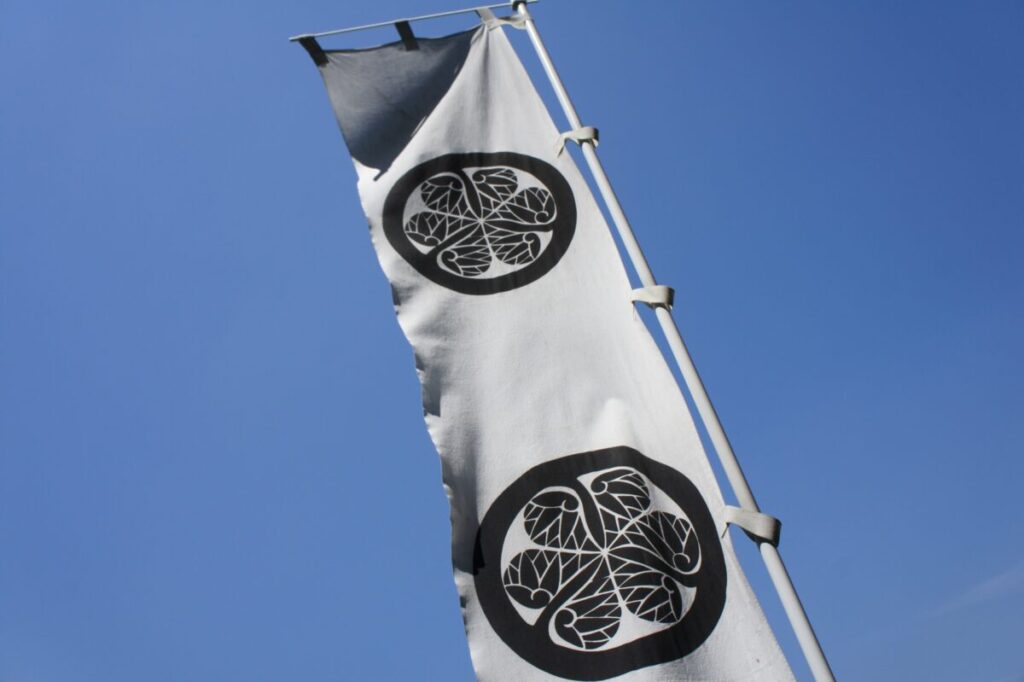
It is said that there was an unspoken rule that one’s own family crest should not resemble any crests of other families because it might cause confusion, and this led to the creation of countless Japanese family crests.
家紋は他家の家紋と似ると混乱を招くという暗黙のルールがあったことから、日本に無数の家紋が生まれたと言われています。
Family crests of those days were often designed with aesthetic motifs such as flowers and animals rather than designs with deeper meaning.
当時の家紋は、深い意味を持つデザインよりも、花や動物などの美的なモチーフを使ったものが多数を占めました。
関連記事:
ヨーロッパの紋章との違いを英語で説明
In the beginning, only people of high status, such as royalty and nobility, were allowed to have their own coats of arms in Europe and they asserted a strong symbol of authority and control.
ヨーロッパでは王族や貴族など高い地位の人だけが紋章を持つことを許され、権威と象徴を主張しました。
On the other hand, in Japan, the rules for having a family crest were not so strict that anyone was allowed to have one regardless of status.
しかし日本では家紋を持つことは厳しくなく、身分に関係なく誰でも持つことができました。
In Europe, it was possible to have a personal coat of arms, but in Japan, family crests were used to identify family members.
また、ヨーロッパでは個人の紋章を持つことができましたが、日本では家族を識別するために家紋が使用されていました。
「家紋」はどこで使われるかを英語説明
One of the most common places to see family crests is Japanese graveyards.
You can find a family’s crest carved on the tombstone.
家紋が最もよく見られる場所は日本のお墓です。墓石に刻まれた家紋を見つけることができます。
In addition, the family crest can be found on furniture and kimono that have been cherished in the family for many centuries.
また、家紋は何世紀にもわたって家族で大切にされてきた家具や着物にも見られます。
Otherwise, the family crests of two families are often printed on wedding invitations to show the strong connection between two families during Japanese weddings.
その他、日本の結婚式では、両家の強い結びつきを示すために、結婚式の招待状に両家の家紋を印刷することがよくあります。
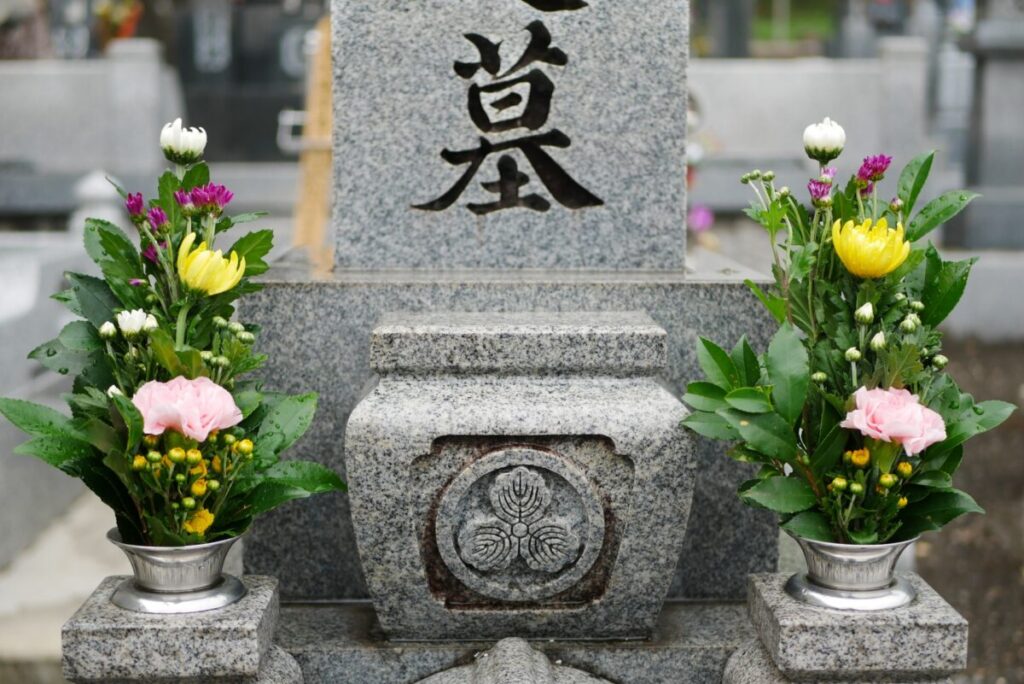
「家紋」の種類を英語で説明
家紋の種類は大きく分けて、桐紋(きりもん)と三つ葉葵(みつばあおい)があります。
それぞれ何に使われているのか解説します。
桐紋
Kirimon is a family crest designed based on the paulownia tree and is the official crest used by the Japanese government. It is also well known as the family crest of the Toyotomi family.
桐紋は桐の木を基にデザインされた家紋のことで、日本政府で使われています。また豊臣家の家紋としても有名です。
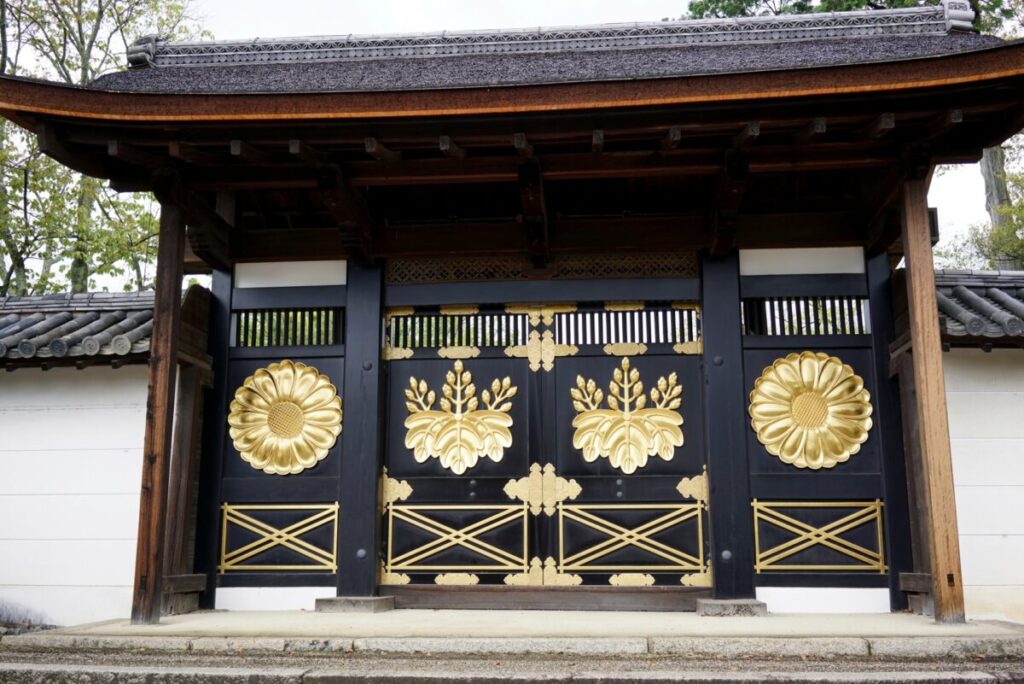
三つ葉葵
Mitsuba-aoi is probably one of the most famous family crests in Japan.
三つ葉葵は、日本で一番有名な家紋かもしれません。
Three-leaf hollyhock is the family crest of the Tokugawa family, which reigned supreme for a long time during the Edo period.
三つ葉葵は、江戸時代に長きにわたって君臨した徳川家の家紋です。
Particularly famous is the Japanese period drama series Mito Komon.
In that series, Tokugawa Mitsukuni, who is also called “Mito Komon”, travels around Japan to do good and punish evil.
特に有名なのは、日本の時代劇「水戸黄門」シリーズです。このドラマでは、水戸黄門と呼ばれる徳川光圀が善を行い悪を罰するために日本中を旅します。
As is customary during the climax scene, he shows a pillbox with the emblem of Mitsuba-aoi in front of bad guys.
番組のクライマックスでは必ず悪者たちに三つ葉葵が入った印籠を見せます。
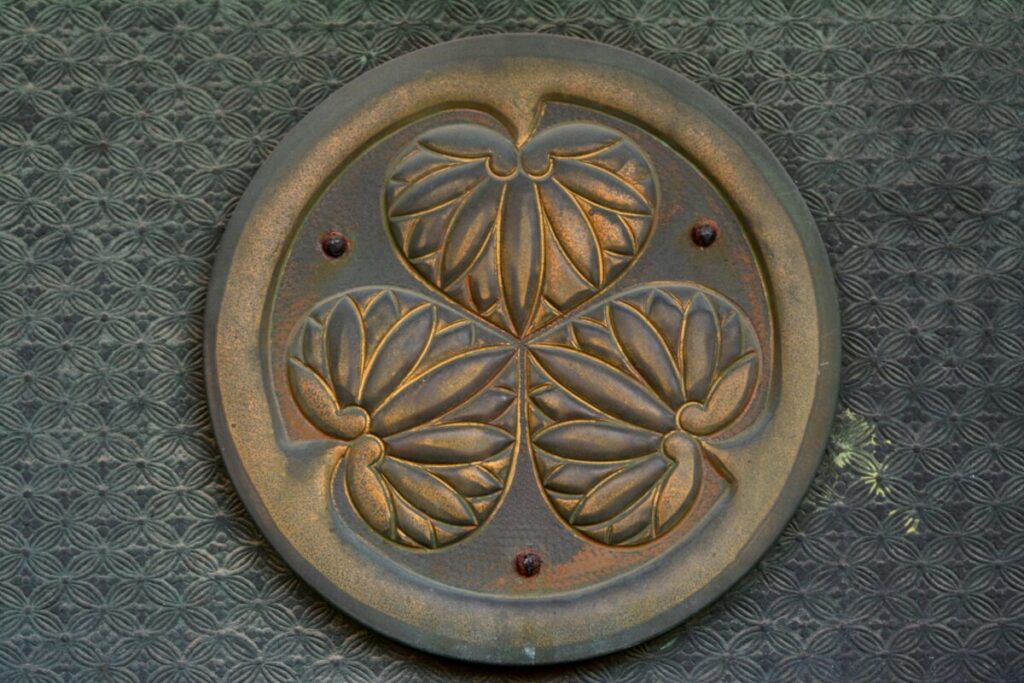
まとめ
今回は家紋について解説しました。外国人に家紋について質問されたときはぜひ、この記事を参考にしてみてください。
あわせて読みたい
ガイドコミュニティ・JapanWonderGuideに参加しませんか?
JapanWonderGuide(JWG)は「日本のガイドの質を世界一に」をスローガンに掲げるガイドコミュニティです。
2020年から活動を開始し、全国通訳案内士等を中心に、現在は、3,800名を超えるコミュニティとなっております。

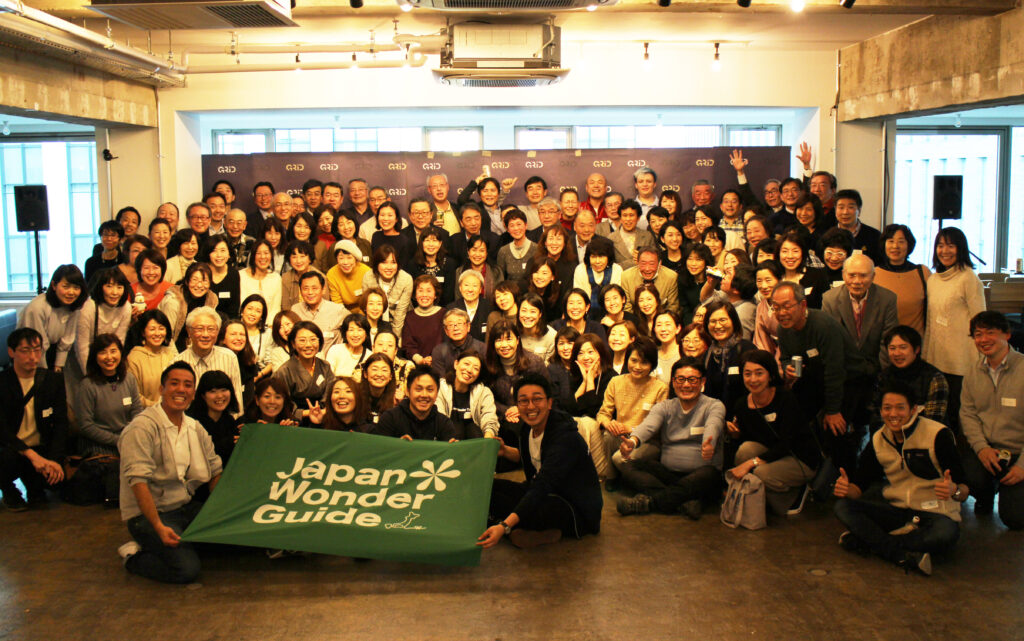
JWGの有料会員(Knottist)にご登録いただくと、月額1,000円(税込1,100円)で、ガイディングやビジネスに活きる知識・スキルが身につくE-Learningが受講し放題!ガイドのスキルアップに特化した研修動画を、お好きなだけ、無料でご視聴いただけます。
さらに、Knottistになると、通訳案内士が5年ごとに必ず受講しなければならない「通訳案内研修」を、オンラインで、無料でご受講いただけます。そのほか、下見やツアー時に割引/無料でご入場いただける優待施設のご利用や、人気観光施設の最新情報や裏話をお届けするJWG Live!の見逃し配信、各研修の割引など、様々な特典をご利用いただけます。
有料、無料会員様ともに研修やイベント情報など、ガイドに役立つ内容がたっぷり詰まったメルマガを月に2回お届け。
また、ガイド仲間を見つけ、交流できるFacebookグループにもご招待!情報交換の場としてお使いください。
| Knottist Free | Knottist | Knottist+ | |
| 料金 | 無料! | 月額1,000円 (税込1,100円) | 年間14,000円※ (税込15,400円) |
| 期間 | 無期限 | 毎月自動更新 | 2026年8月31日まで |
| ①E-learning動画配信 | 有料 | 無料 | 無料 |
| ②メンバー向けメルマガ受信 | ○ | ○ | ○ |
| ③JWG Live!見逃し配信 | △ | ○ | ○ |
| ④JWG主催研修割引 | – | ○ | ○ |
| ⑤JWG交流会へご招待 | 有料 | 無料 | 無料 |
| ⑥通訳案内研修 | 3,500円 | 無料 | 無料 |
| ⑦E-learning動画配信 | 有料 | 無料 | 無料 |
| ⑧メンバー限定Facebookグループご招待 ※ご希望される場合のみ | 〇 | 〇 | 〇 |
| ⑨通訳ガイド保険 | – | – | ○ |
※Knottist+の会費は加入月によって変動します
★通訳ガイド保険がついたKnottist+もご用意しております。資格の保有の有無に関わらず、通訳案内業務が補償の対象となりますので、どなたでも安心してガイドのお仕事をしていただけます。
インバウンド復活の兆しも少しずつ見えてきました。ぜひこの機会にご検討ください。
まずKnottist Free (フリーメンバー)に登録し、月2回メルマガを受け取ってみませんか?
JWGで、日本の観光を一緒に盛り上げていきましょう!






